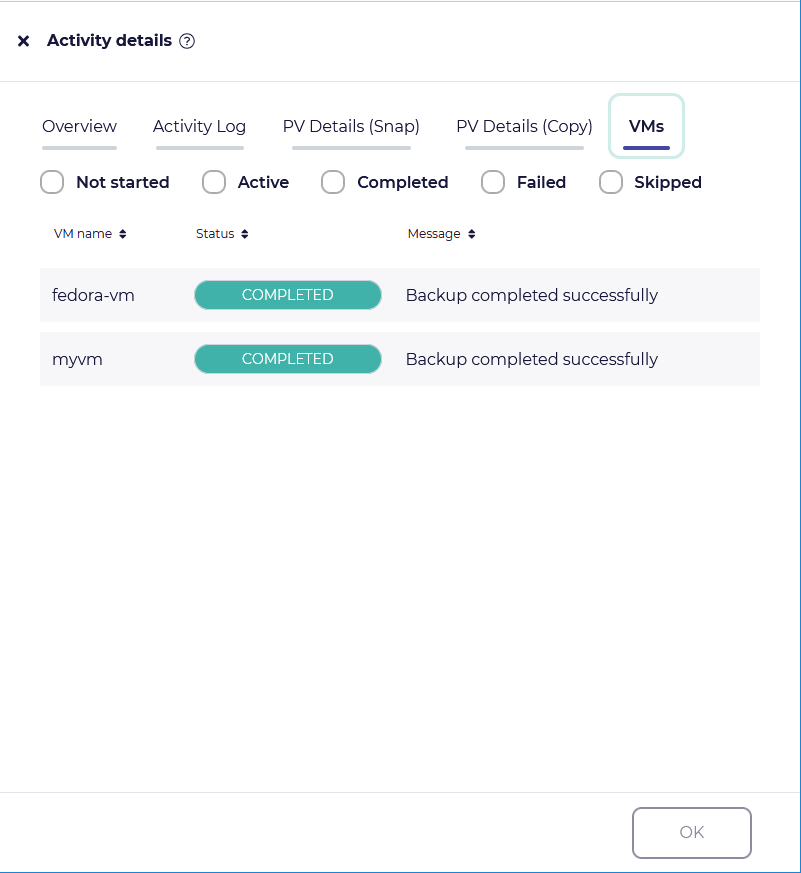Effortless VM Management in Kubernetes Clusters
KubeVirt has revolutionized the handling of virtual machines (VMs) within Kubernetes environments, providing a seamless bridge between traditional and cloud-native infrastructure management. CloudCasa enhances this integration by offering comprehensive backup, restore, and migration services for VMs running on KubeVirt and KubeVirt-based systems such as SUSE Virtualization(Harvester) and Red Hat OpenShift Virtualization. These solutions are fully compatible with KubeVirt version v1.0.0 and above, as well as CDI version v1.57.0 and higher, ensuring broad support across platforms including SUSE Virtualization(Harvester) versions 1.3.1 & 1.3.2, and Red Hat OpenShift Virtualization 4.16.10.
Streamlined KubeVirt VM Backup
The backup process for VMs in KubeVirt environments with CloudCasa is designed for simplicity and efficiency. There’s no need for intricate setup—VM detection is automatic, enabling either complete cluster backups or selective backups of specific VMs via namespaces and labels. The activity details pane tracks the backup status, offering

Enhancing Backup Consistency with the Guest Agent
CloudCasa utilizes the QEMU Guest Agent (GA) to further ensure the integrity of KubeVirt VM backups. Operating inside the VM, the GA executes “freeze” and “unfreeze” hooks to stabilize the filesystem by temporarily pausing I/O operations during the backup process. Installing the GA, though optional, is recommended to maximize the consistency and reliability of backups.
Reliable KubeVirt VM Restore Capabilities
Restoring VMs using CloudCasa mirrors the simplicity of its backup services. The platform’s restore wizard applies CloudCasa’s resource filtering options to precisely target and restore VMs and their associated dependencies, ensuring that each virtual machine is reinstated accurately within its original Kubernetes ecosystem.
Key Restoration Considerations:
- Accurate Namespace Selection: To use namespace filters effectively, accurately identifying the VM’s namespace is crucial.
- Management of Multiple VMs: When restoring in environments with multiple VMs per namespace, combining resource label and type filters helps avoid interference with non-target resources.
- Comprehensive Resource Restoration: To fully restore a VM’s operational state, all associated resources such as DataVolumes, ConfigMaps, and Secrets must be included in the process.
The Critical Role of CDI in KubeVirt
The Container Data Importer (CDI) is essential within the KubeVirt backup and restore framework, particularly when dealing with the import and management of disk images. CDI facilitates the import of external disk images into Kubernetes as PVCs, which is vital for initial VM provisioning and for the accurate restoration of VM disk images from backup data.